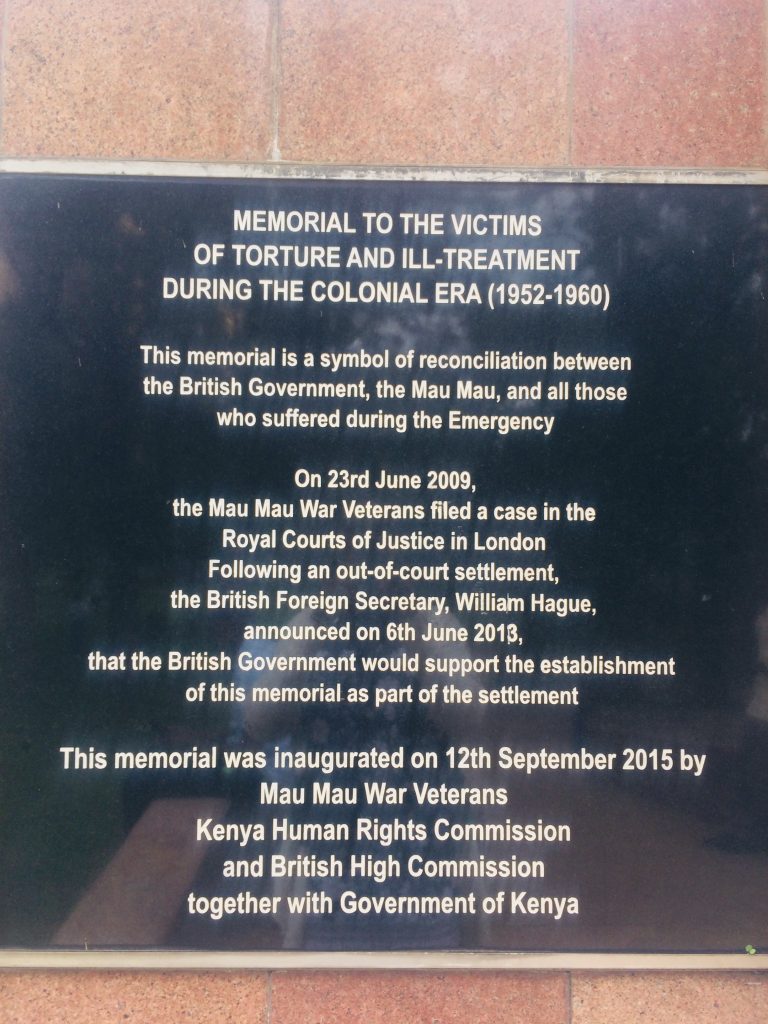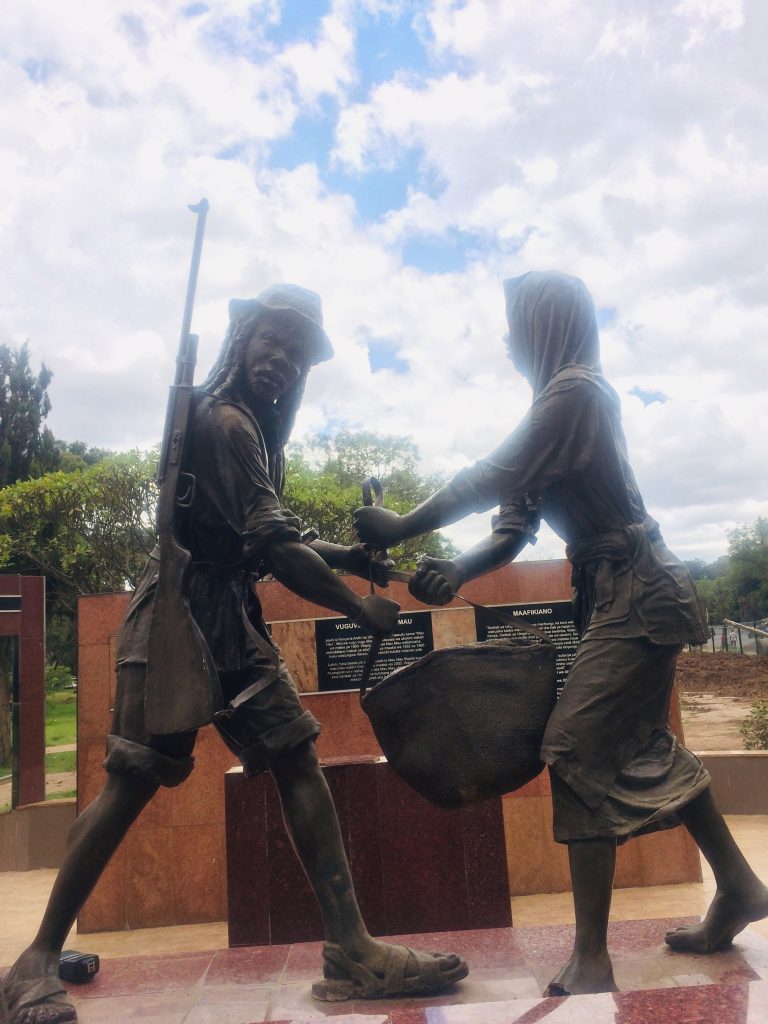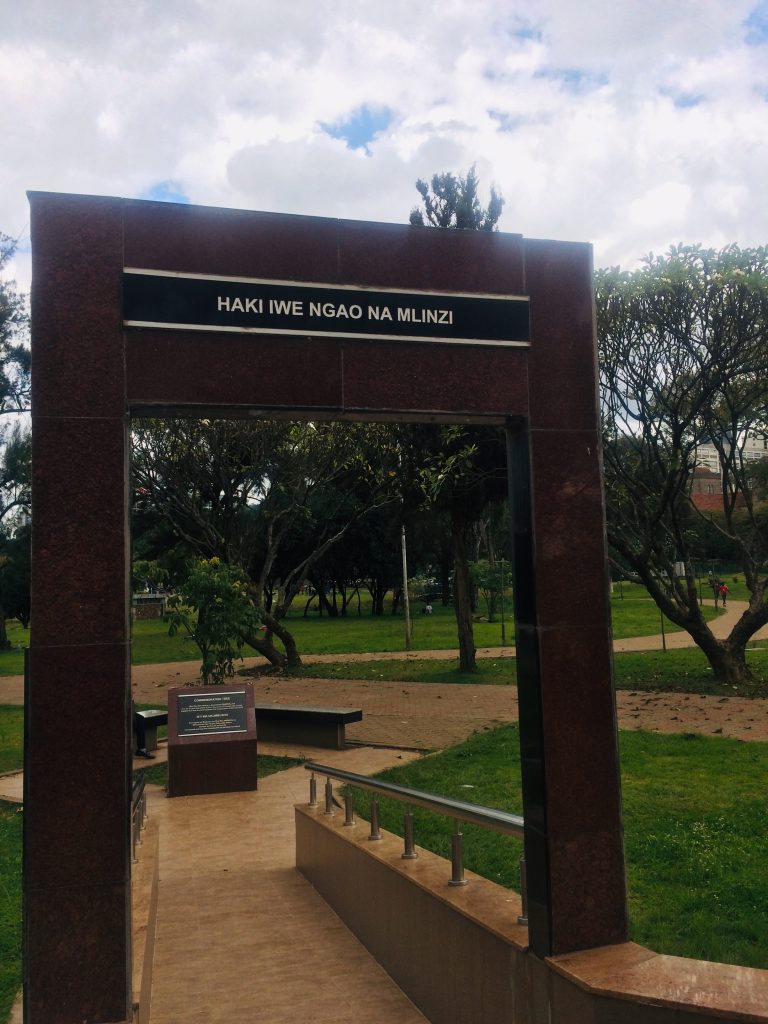If Nairobi had a heartbeat, you’d feel it at Uhuru Park.
For decades, Uhuru Park has stood as a symbol of freedom, resilience, and national identity. It’s one of the few free green spaces in Nairobi that provides both reprieve from the sun and the city, as well as quiet moments of reflection.
While the park’s recent facelift has made it a more scenic stop for visitors and locals alike, its legacy runs much deeper. For travellers hoping to understand Kenya better, Uhuru Park offers a profound look into the country’s past and a glimpse into her future.
A Place Named for Freedom

The word uhuru means freedom in Swahili — a fitting name for a park that has witnessed some of Kenya’s most pivotal moments. It was opened to the public in 1969 by President Jomo Kenyatta, who envisioned the park as a democratic space: a place where people could gather, express themselves, and simply be.
Over the years, it has lived up to that promise in ways both beautiful and bittersweet.
The Mau Mau Memorial

Tucked within the grounds of Uhuru Park is a sculpture that often stops people in their tracks: a bronze statue depicting a Mau Mau freedom fighter receiving supplies from a woman supporter — her face covered and his looking away, for both their safety and anonymity.
This memorial honours the unsung heroes of Kenya’s liberation struggle, those who fought in the forests and those who quietly resisted through support, sacrifice, and solidarity. It’s a tale carved in stillness and a moving reminder of the human cost of freedom.
A Ground for Voices

Uhuru Park has long been the platform for the people. It’s where protests have erupted and where hope has gathered in waves. The park hosted key political rallies during Kenya’s push for multiparty democracy in the early 1990s.
But most notably, Uhuru Park is where brave voices like Wangari Maathai famously stood up to government-backed development plans that threatened the park’s green cover. Her defiant stand preserved a space that generations continue to enjoy today.
Even now, when you walk its paths, it’s easy to imagine the echo of voices raised in unity, some calling for change, others celebrating it.
A Landmark of Nairobi

Beyond politics, Uhuru Park is also deeply personal.
For many Nairobians, this is where they learned to ride a bike, enjoyed their first boat ride, or took family photos on school outings. It has been a place for quiet afternoon walks, passionate youth group events, and tender first dates.
In March 2025, Africa’s telecoms giant, Safaricom, held its M-pesa@18 concert at this park, further cementing its importance as an iconic symbol of Nairobi.
If you speak to locals, you’ll likely to hear a story that begins with, “Once when I went to Uhuru Park…”
Why It Matters to Travelers

For travelers, Uhuru Park offers something unique: an experience that’s grounded in real, lived history. It’s not a polished museum or a curated gallery. It’s raw, real, and resonant.
Visiting Uhuru Park is your chance to connect with the spirit of Nairobi. To stand where history was made, where freedom was demanded, and where life continues to unfold in all its colours and complexities.
So, once Kendirita Tours has taken you to the Mara for the lions and the gazelles, please leave some space for the stories. Because Uhuru Park has plenty of those to tell.
Writer: Winnie Wekesa
